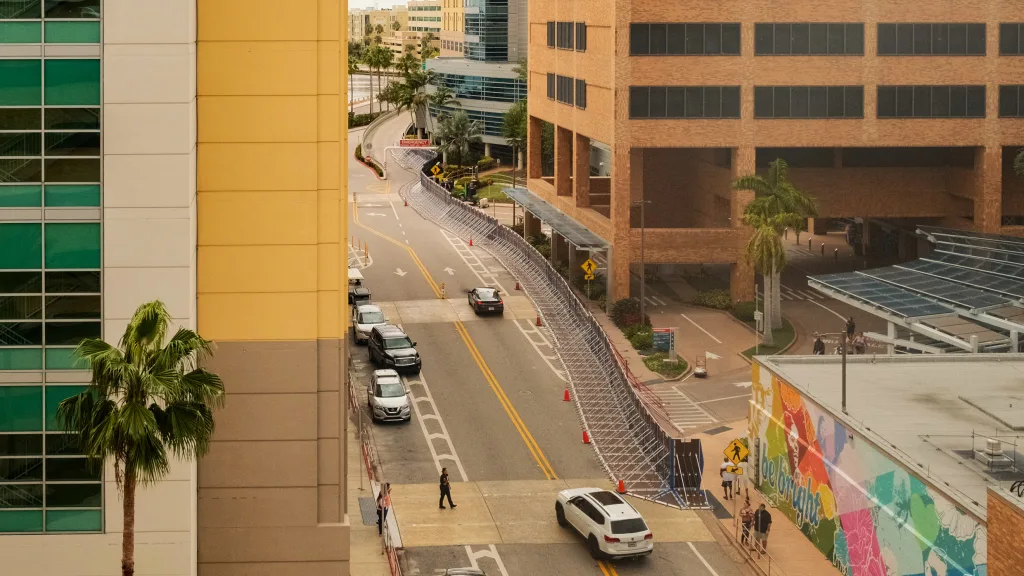Tampa General, a Florida hospital with just over 1,000 beds and the region’s only Level 1 trauma center, sits on the tip of Davis Islands. It’s one of the lowest-lying neighborhoods in the Florida city, and was a mandatory evacuation zone ahead of Hurricane Milton, which swept across the west coast of Florida Wednesday night.
That storm brought intense rain, flooding, and even tornadoes, leaving more than three million people without power. Davis Islands saw at least four feet of storm surge Wednesday night. But Tampa General weathered the storm, thanks in part to its AquaFence, a reusable mobile flood barrier made of panels that can fold open to be quickly deployed ahead of an emergency, and that secure to the ground with metal anchors.

Tampa General did experience some impacts from Hurricane Milton. The hospital said it had some minor leaks Wednesday night, but that its power and supplies held strong, and that there was no threat to staff or patient safety. The hospital remained open Thursday morning.
Around Tampa General, the AquaFence stood 10 feet tall in parts of the perimeter. That barrier can withstand up to 15 feet of storm surge, the hospital said. Tampa General deployed the AquaFence for Hurricane Helene as well, where it protected the hospital from a seven-foot storm surge. The facility used the flood barrier system during Hurricane Ian, too.
AquaFence was founded in 1999, and now is used as flood protection for properties across North America, Europe, and Asia. In the U.S. alone, AquaFence says its systems protect more than $30 billion of real estate. The watertight fences come in a few forms, including a FloodWall, which is what Tampa General deployed; a lightweight Flash Wall that can be stored in a carry bag and set up by one person in front of a door to protect against flash flooding; and a Flood Barricade, a short barrier that can be installed on things like windows and garage doors.
The AquaFence is just one flood mitigation effort the hospital has put in place to protect against hurricanes. “While AquaFence has proven effective in the past, it is just the first line of defense and one of many mitigation efforts we’ve implemented this week to safely continue care for our patients,” Jennifer Crabtree, chief of staff at Tampa General, told the Tampa Bay Times ahead of Milton’s landfall. The hospital also has industrial-grade pumps to remove any water that might get past the AquaFence, and it also moved patients away from its first floor ahead of the storm.
As climate change is making flooding more common and fueling stronger storms like Hurricane Milton, more companies have been developing flood barrier systems like the AquaFence. New York City has installed floodgates on top of subway station entrances to prevent them from filling up with water. Ahead of Hurricane Milton, Jacksonville, Florida, deployed Tiger Dams, which are inflatable tube-shaped barriers meant to hold back rising waters.
So-called “sponge cities” are also adapting to extreme rain with green infrastructure, like parks that turn into reservoirs and green roofs that can slow down the influx of water. In New Orleans, a convent that was destroyed by Hurricane Katrina turned its grounds into a flood-prevention urban wetland that can help protect the city from future storms.